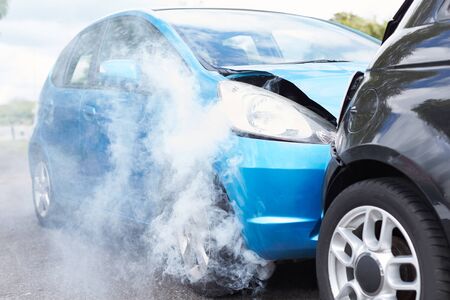1. Introduction to Tire Compounds
When it comes to performance driving and track racing, tire compounds play a crucial role in grip, handling, and overall driving experience. The type of tire compound you choose directly affects how your car performs in terms of speed, cornering ability, and tire longevity.
What Are Tire Compounds?
Tire compounds refer to the specific mix of rubber, polymers, and other materials used in tire construction. Manufacturers create different compounds to balance key factors such as grip, durability, and heat resistance. The right compound can make the difference between setting a new lap record and struggling to maintain control in the corners.
How Tire Compounds Affect Performance
Grip and Traction
The softer a tire compound is, the more grip it provides on the track. This allows for better handling and faster lap times. However, softer compounds also wear out more quickly. On the other hand, harder compounds offer longer-lasting durability at the cost of reduced grip.
Wear and Longevity
Tire wear is an essential factor to consider, especially for endurance racing or repeated track use. Softer compounds wear out faster, which means drivers may need to replace them more frequently. Harder compounds, while lasting longer, may not provide the same level of control or responsiveness.
Heat Management
Tires generate heat as they grip the track surface. The ability of a tire compound to manage heat affects overall performance. If a tire gets too hot, it can become greasy and lose traction. If it stays too cool, it may not achieve optimal grip. Different compounds have specific temperature ranges in which they perform best.
Comparison of Tire Compounds
| Tire Compound | Grip Level | Wear Rate | Heat Resistance |
|---|---|---|---|
| Soft | High | Fast Wear | Lower Heat Tolerance |
| Medium | Balanced | Moderate Wear | Moderate Heat Tolerance |
| Hard | Lower | Slow Wear | Higher Heat Tolerance |
Choosing the Right Compound
The ideal tire compound depends on your driving style, track conditions, and race duration. For short sprint races or cooler temperatures, softer compounds may provide the best lap times. For endurance events or high-temperature tracks, harder compounds could be the better choice.
2. Soft vs. Hard Compounds: Pros and Cons
When choosing the right tire compound for track performance, understanding the differences between soft and hard compounds is crucial. Each type offers distinct advantages depending on the track conditions, driving style, and duration of the session. Below, we’ll compare their grip levels, durability, and suitability for different scenarios.
Grip Levels
One of the most noticeable differences between soft and hard tire compounds is grip. Soft compounds have a stickier rubber, which allows them to grip the track surface more effectively, providing superior traction and faster lap times.
On the other hand, hard compounds offer less grip initially but can maintain performance longer under high temperatures and extended driving sessions.
Longevity
Tire wear is another essential factor to consider. Soft compounds tend to wear out more quickly due to their high friction with the track surface. They provide excellent performance for short sessions and qualifying laps but degrade faster if used for extended periods.
Hard compounds, in contrast, offer better durability. They don’t wear as quickly, making them a better option for endurance races or longer track sessions where consistency is key.
Suitability for Different Track Conditions
Different track conditions will influence which tire compound is the best choice. Soft compounds perform well on cooler tracks or tracks with smooth asphalt, where maintaining grip is critical. Conversely, hard compounds handle high-heat conditions better, making them ideal for abrasive surfaces and hot climates where softer tires would wear down too quickly.
Comparison of Soft and Hard Tire Compounds
| Feature | Soft Compound | Hard Compound |
|---|---|---|
| Grip Level | High (better traction and cornering) | Lower (requires more heat to reach optimal grip) |
| Longevity | Shorter lifespan (wears out quickly) | Longer lifespan (resistant to wear) |
| Best for | Short races, qualifying laps | Endurance races, long sessions |
| Track Suitability | Cooler temperatures, smooth surfaces | Hot temperatures, abrasive surfaces |
Choosing between soft and hard compounds depends on your specific needs on the track. If you’re aiming for ultimate grip and the fastest lap possible, a soft compound may be the best option. However, if you need consistency and longevity, especially during an endurance race, a hard compound may be the smarter choice.
![]()
3. Impact on Handling and Traction
Tire compounds significantly affect how a vehicle handles on the track, influencing cornering stability, braking distances, and acceleration. Choosing the right compound can make a major difference in performance, as different compounds interact with the road surface in unique ways.
Cornering Stability
Cornering is one of the most critical aspects of track performance. Softer compounds offer more grip by conforming to the track surface, improving stability through turns. However, they wear out faster. Harder compounds, on the other hand, last longer but provide less grip, which can result in reduced cornering speed.
Comparison of Soft vs. Hard Compounds in Cornering
| Tire Compound | Grip | Wear Rate | Cornering Speed |
|---|---|---|---|
| Soft | High | Fast | Higher |
| Hard | Lower | Slow | Lower |
Braking Distances
Tire compounds also play a crucial role in braking performance. Softer compounds provide a better grip, reducing stopping distances. This is essential for high-speed track driving, where every foot matters. Harder compounds, while more durable, may lead to longer braking distances, requiring more planning during braking zones.
Effect of Tire Compound on Braking
When braking at high speeds, softer tires allow the vehicle to slow down more efficiently, especially on smooth, dry tracks. Conversely, harder tires may struggle to provide the same levels of friction, leading to longer deceleration times.
Acceleration Performance
The type of tire compound used also affects acceleration, particularly in terms of traction. Softer compounds help maximize power delivery to the ground, reducing wheel spin and improving launch performance off the starting line. Harder compounds are more prone to slipping under heavy acceleration, which can hinder straight-line speed from a standstill.
Choosing the Right Compound for Your Driving Style
For drivers prioritizing maximum grip and performance, soft compounds are the best choice, but they require frequent replacement. Those looking for durability and longer runs may prefer harder compounds, though they may sacrifice some handling precision.
4. Heat and Tire Performance
Temperature plays a crucial role in how a tire performs on the track. Both too much and too little heat can negatively impact grip, wear, and overall handling characteristics. Understanding the effect of temperature on your tires can help you optimize performance and longevity.
Effects of Temperature on Tire Performance
Tires work best within a specific temperature range. If they are too cold, they lack grip; if they are too hot, they can overheat and degrade quickly. Getting them into the optimal range and keeping them there is key to consistent lap times.
| Tire Temperature | Performance Effect |
|---|---|
| Too Cold | Low grip, reduced traction, increased sliding |
| Optimal Range | Maximum grip, consistent handling, balanced wear |
| Too Hot | Overheating, greasy feel, accelerated wear |
Optimal Operating Temperature Ranges
Each tire compound has a specific temperature range where it delivers optimal grip and performance. Below are general guidelines for different tire compounds:
| Tire Type | Optimal Temperature Range (°F) |
|---|---|
| Soft Compound | 160-220 |
| Medium Compound | 180-240 |
| Hard Compound | 200-260 |
If the tires are outside these ranges, performance may drop significantly. Using tools like infrared temperature guns or tire pyrometers can help determine if adjustments are needed in tire pressures, alignment, or driving style.
Heat Cycles and Longevity
As tires go through heat cycles—where they heat up and cool down repeatedly—the rubber gradually hardens and loses grip. This process affects the lifespan of the tire and its performance over time.
How Heat Cycles Work
- When new, the tire has its softest and most grippy rubber surface.
- With each cycle, molecular changes in the compound cause it to stiffen.
- Over time, the tire becomes harder, reducing traction and effectiveness.
To maximize tire life, avoid excessive heat buildup and allow tires to cool properly between sessions. Proper storage and controlled warm-up procedures can also help preserve their effectiveness for as long as possible.
5. Choosing the Right Compound for the Track
Selecting the right tire compound is essential to maximize performance and handling on the track. The ideal compound depends on factors like track surface, weather conditions, and driving style. Below are key guidelines to help you make the best choice.
Understanding Track Surface
Different tracks have varying surfaces that affect grip levels. Here’s a quick guide:
| Track Surface | Recommended Compound |
|---|---|
| Smooth Asphalt | Softer compound for maximum grip |
| Rough Asphalt | Medium or hard compound to prevent excessive wear |
| Concrete | Medium compound with good durability |
Considering Weather Conditions
Weather conditions play a major role in tire behavior. Choosing the right compound based on temperature and moisture levels can improve traction.
Hot and Dry Conditions
In high temperatures, softer compounds may overheat and degrade quickly. A medium or hard compound is recommended to maintain performance:
- Harder compounds resist heat buildup and last longer.
- Medium compounds offer a balance between grip and durability.
Cold and Dry Conditions
In cooler temperatures, softer compounds provide better grip as they reach optimal temperature more quickly:
- Softer compounds improve traction in cold weather.
- Medium compounds may require more warming up before reaching peak performance.
Wet Tracks
For wet or damp conditions, specialized wet tires with softer compounds and deeper tread patterns are ideal:
- Soft compounds enhance grip on wet surfaces.
- Grooved tires help channel water away and prevent hydroplaning.
Matching Compound to Driving Style
Your driving style also impacts tire selection. Aggressive drivers who push the car to its limits may benefit from softer compounds, while smooth and controlled drivers may get better longevity from harder compounds.
Aggressive Driving Style
If you push the car hard with late braking and high-speed cornering, a softer compound will provide the necessary grip, but it may wear out faster.
Conservative Driving Style
If you drive smoothly with gradual inputs and minimal tire scrubbing, a harder compound can last longer while maintaining consistent performance.
By considering track conditions, weather, and driving style, you can select the ideal tire compound to optimize your car’s handling and performance on the track.


